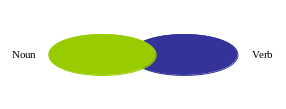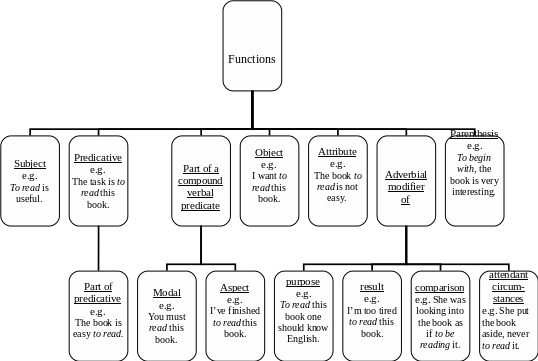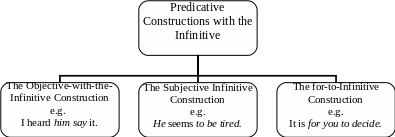
- •Содержание
- •Введение
- •Раздел I. Введение.
- •Theoretical grammar as a brunch of linguistics
- •Systemic conception of language
- •Discrimination of Language and Speech
- •Hierarchy of Language Levels
- •Language Units and Speech Units
- •Systemic Relations in Language
- •Morphology morphemic structure of the word
- •Traditional Classification of Morphemes
- •Allo-emic Classification of Morphemes
- •Types of Distribution
- •Categorial structure of the word
- •Grammatical means
- •Grammatical forms
- •Inflextional forms
- •Inner inflextional forms
- •Neutralization
- •Transposition
- •Grammatical classes of words
- •Parts of speech
- •Nominative parts of speech
- •Particles
- •Word classes
- •4 Major classes of words 15 Form-classes
- •Noun and its categories semantic features of the noun
- •Morphological features of the noun
- •Categories of the Noun
- •Category of Number
- •Indiscreteness is explicitly expressed
- •Types of Oppositional Reduction
- •Category of Case
- •Case Theories
- •Category of Gender
- •Category of Article Determination
- •Syntactic features of the noun
- •Verb and its categories classifications of verbs
- •Category of Finitude
- •Categories of the verb Categories of Person and Number
- •Category of Aspect
- •Evolution of Views
- •Category of Retrospect
- •Category of Voice
- •Category of Mood
- •The Infinitive
- •The Gerund
- •Double Nature of the Gerund
- •The Participle
- •Adjective semantic features of the adjective
- •Morphological features of the adjective
- •Adjectives that do not Form Degrees of Comparison
- •Syntactic features of the adjective
- •Order of Adjectives before a Noun
- •Stative symantic features of the stative
- •Morphological features of the stative
- •Syntactic features of the stative
- •The Adjective and the Stative
- •Adverb semantic features of the adverb
- •Morphological features of the adverb
- •Syntactic features of the adverb
- •Syntax word-group theory
- •Sentence: general
- •Classification of Sentences
- •Communicative Classification of Sentences
- •Simple sentence
- •Sentence parts
- •Principle sentence parts subject
- •Predicate
- •The simple predicate can be of two types: verbal and nominal. The simple verbal predicate can be expressed in two ways (Fig. 122).
- •Compound Verbal Modal Predicate
- •Compound Nominal Predicate
- •Secondary sentence parts object
- •Attribute
- •Apposition
- •Adverbial modifier
- •Independent elements of the sentence
- •Composite sentence
- •The means of combining clauses into a polypredicative sentence are divided into syndetic, I. E. Conjunctional, and asyndetic, I. E. Non-conjunctional (Fig. 144).
- •Compound sentence
- •There exist two different bases of classifying subordinate clauses: the first is functional, the second is categorical.
- •Glossary of linguistic terms
- •Refferences
- •Заключение
- •454080 Г. Челябинск, пр. Ленина, 69
- •454080 Г. Челябинск, пр. Ленина, 69
The Infinitive
The infinitive is the non-finite form of the verb which serves as the verbal name of a process. It names a process in a most general way. It is considered as the head-form of the whole paradigm of the verb.
Like other non-finite forms of the verb the infinitive has a double nature: it combines verbal features with those of the noun (Fig. 67).

Fig. 67
The verbal features of the infinitive are of two kinds: morphological and syntactical. Morphological: the infinitive distinguishes three grammatical categories sharing them with the finite verb, namely, the aspective category of development (continuous in opposition), the aspective category of retrospective coordination (perfect in opposition), the category of voice (passive in opposition) (Fig. 68).

Fig. 68
Thus, the infinitive of transitive verbs has six forms (Table 7).
Table 7
Forms of the Infinitive
|
Active |
Passive |
Indefinite |
to do |
to be done |
Continuous |
to be doing |
_________ |
Perfect |
to have done |
to have been done |
Perfect Continuous |
to have been doing |
_________ |
Syntactical features: the infinitive possesses the verb combinability. The verb-type combinability of the infinitive is displayed in its combining, first, with nouns expressing the object of the action; second, with nouns expressing the subject of the action; third, with modifying adverbs (Table 8).
The combinability of the infinitive reflects its dual semantic nature. The noun-type combinability of the infinitive is displayed in its syntactical functions. It performs almost all syntactical functions characteristic of the noun, although in each of them it has certain peculiarities of its own (Table 8).
Table 8
Double Nature of the Infinitive
Nominal character |
Verbal character |
1. It can be used as a subject of a sentence e.g. To see is to believe. |
1. It can take a direct object (transitive verbs) e.g. He wants to see me. |
2. It can be used as an object e.g. He wants to see me. |
2. It can be modified by an adverb e.g. I want to see him immediately. |
3. It can be used as a predicative e.g. To see is to believe. |
3. It has tense, aspect distinctions, voice distinctions (transitive verbs). |
The infinitive performs the functions of all types of notional sentence-parts, i. e. the subject, the object, the predicative, the attribute, the adverbial modifier (Fig. 69). In all syntactical functions the infinitive may be used alone, without any words depending on it, as the headword of an infinitive phrase, with one or more words depending on it, as part of an infinitive predicative construction, as a logical predicate to some nominal element denoting the logical subject of the infinitive.
The infinitive is used in predicative constructions of three types: the objective with the infinitive construction, the subjective infinitive construction and the so-called for-to-infinitive construction (Fig. 70).
In the objective with the infinitive construction the infinitive (usually an infinitive phrase) is in predicate relation to a noun in the common case or a pronoun in the objective case. The whole construction forms a complex object of some verbs. It is rendered in Russian by an object clause.
In the for-to-infinitive construction the infinitive (usually an infinitive phrase) is in predicate relation to a noun in the common case or a pronoun in the objective case introduced by the preposition for. The construction is used where the doer of the action (or the bearer of the state), expressed by the infinitive, is different from that of the finite verb (the predicate).
In the subjective infinitive construction the infinitive (usually an infinitive phrase) is in predicate relation to a noun in the common case or a pronoun in the nominative case.
Fig. 69


Fig. 70
